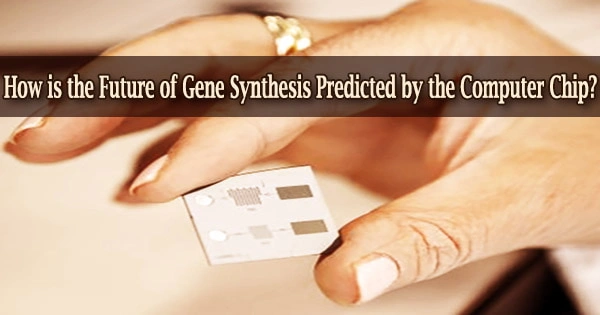Based on a comparison with the development of computer chips, creating synthetic life may be readily within our grasp in the near future. There seems to be minimal overlap between gene synthesis and computer programming.
However, Ohio Eminent Scholar and University of Cincinnati professor Andrew Steckl is hopeful that large-scale gene manufacturing is feasible due to technological advances in the former.
In order to comprehend another complicated system, synthetic biology, Steckl and his student Joseph Riolo used the history of the development of microchips and large-scale computer software platforms as a predictive model. Remarks made by Eliot Gomez, a member of his group of students motivated the effort.
“No analogy is perfect. DNA doesn’t meet certain definitions of digital code,” Riolo said, “but there are a lot of ways the genome and software code are comparable.”
Synthetic biology has the potential to be “the next epochal technical human breakthrough after microelectronics and the internet,” claims the UC study. It can be used for a wide range of things, including generating new biofuels and medical procedures.
When researchers at the J. Craig Venter Institute inserted a synthetic Mycoplasma mycoides genome into an additional bacterial cell in 2010, they produced the first synthetic organism. It cost more than $40 million and 15 years to create this rather simple artificial genome.
However, Steckl claimed that we might deduce the speed and costs of generating such synthetic life might follow a similar trajectory as the performance and price of electronics over time by using the development of computer chips as a guide.
I see a correlation between how computing has evolved as a discipline. Now you see heavy-duty computing in every science discipline. I see something similar happening in the world of biology and bio-engineering. Biology is everywhere. It will be interesting to see how these things evolve.
Professor Andrew Steckl
The contrast and similarities between biological and digital coding languages in terms of alphabet, words, and sentences are highlighted in the article. The authors stress that the intricate tale of genes is only partially revealed by DNA coding, which omits elements like epigenetics and the combinations of adenine, guanine, thymine, and cytosine that make up a genome.
“There are all kinds of caveats, but we need a zero-order comparison to start down this road,” said Steckl, a distinguished research professor who holds joint appointments in electrical engineering, biomedical engineering, and materials engineering in UC’s College of Engineering and Applied Science.
“Can we compare the complexity of programming a fighter plane or Mars rover to the complexity associated with creating a genome of a bacterium?” Steckl asked. “Are they of the same order or are they significantly more complicated?”
“Either biological organisms are way more complicated and represent the most complicated ‘programming’ that has ever been done so there’s no way you can duplicate it artificially or perhaps they’re of the same order as creating the coding for an F-35 fighter plane or a luxury car, so maybe it is possible.”
A forecasting model for the development of computer chips is Moore’s Law. Named after the co-founder of Intel and computer scientist Gordon Moore, it implies that technological advancements permit the exponential increase of transistors on a single computer chip.
And even if the advancements in three-dimensional microchips are less beneficial in terms of performance and power savings than earlier breakthroughs, Moore’s theory is still in use 55 years after he published it.
According to the study, since 2010, the cost of editing genes and creating new genomes has generally decreased every two years, just like Moore’s Law predicts.
“This would mean that synthesizing an artificial human genome could cost approximately $1 million dollars and simpler applications like a custom bacterium could be synthesized for as little as $4,000,” the authors said in the study.
“This combination of surmountable complexity and moderate cost justifies the academic enthusiasm for synthetic biology and will continue to inspire interest in the rules of life,” the study concluded.
In a similar vein, Steckl asserted that bio-engineering might become fundamental to almost every industry and science, much like computer science transformed from a specialized field to an essential part of almost every science.
“I see a correlation between how computing has evolved as a discipline. Now you see heavy-duty computing in every science discipline,” Steckl said. “I see something similar happening in the world of biology and bio-engineering. Biology is everywhere. It will be interesting to see how these things evolve.”
The potential to produce artificial life does not necessarily convey the responsibility or moral authority to do so, according to Steckl and Riolo.
“It’s not something to be taken lightly,” Steckl said. “It’s not as simple as we should do it because we can do it. One should also consider the philosophical or even religious implications.”
















